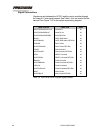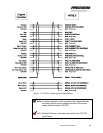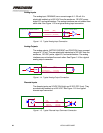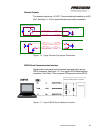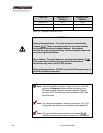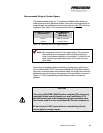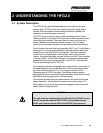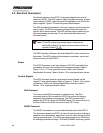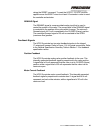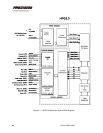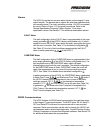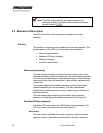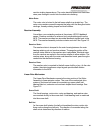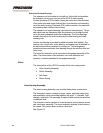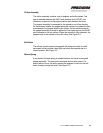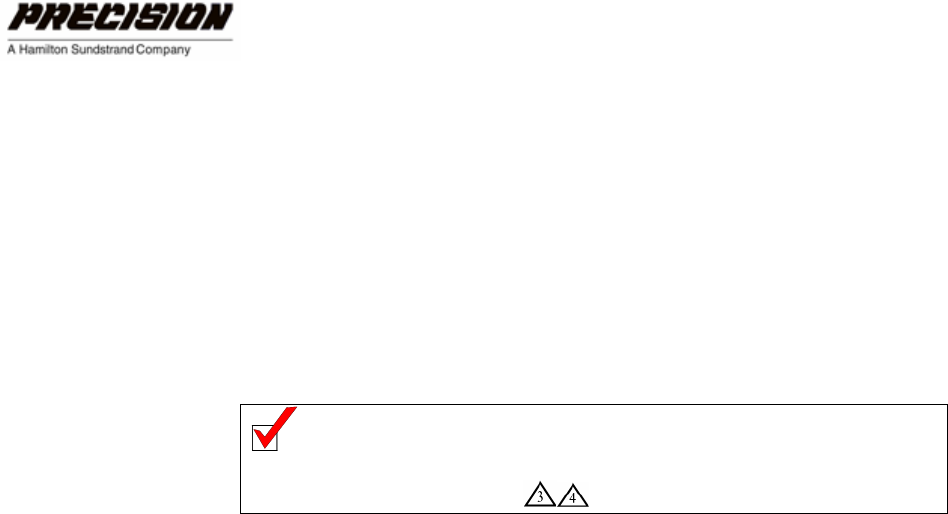
26 HFG2.0 USER GUIDE
2.2 Electrical Description
The electric actuator in the HFG2.0 incorporates digital motor control
electronics (MCE). The MCE contain analog to digital converters, a digital
signal processor (DSP), application specific integrated circuit (ASIC) and
power supplies. Figure 2-1 shows the system block diagram.
The MCE provides the interface for the user’s engine control system and
power supply. The MCE incorporates analog and discrete inputs and
outputs, and a serial interface. The MCE provides signal conditioning for
all external analog and discrete I/O, as well as internal resolver and
thermistor inputs.
Note: The MCE analog and discrete signal interfaces are
electrically isolated. The serial communication interface is
optically isolated
The MCE internally interfaces with the brushless DC motor, resolver and
thermistors. The MCE performs all necessary commutation, control and
status monitoring for the HFG2.0.
Power
The HFG2.0 operates on an input voltage of 120 VDC (nominal) that is
provided by the user via an integral four-wire power harness. Refer to
Figure 1-10 or 1-11 for a typical connection. Refer to the General
Specification Summary Table in Section 1.2 for load specification values.
Control Signals
The HFG2.0 accepts three two-wire external control signals via the
integral 17-wire signal harness. Refer to Figures 1-13 and 1-15 for typical
connections. Refer to the General Specification Summary Table in
Section 1.2 for signal specification values.
RUN Command
The user-provided RUN command is a discrete input. The RUN
command must be ON to enable the HFG2.0 to perform the homing
sequence after resetting or powering up. The RUN command also
enables the HFG2.0 to track the DEMAND signal. The valve will move to
the Stop Position if the RUN command is set to OFF or lost.
RESET Command
The RESET command is a user-provided discrete input to the HFG2.0.
This command causes the HFG2.0 to reset all internal position indicators,
reload all set-up parameters, and to then move the valve through its initial
homing sequence again. (The RUN command must be set to ON before
the homing sequence can begin.) RUN and DEMAND inputs are ignored



